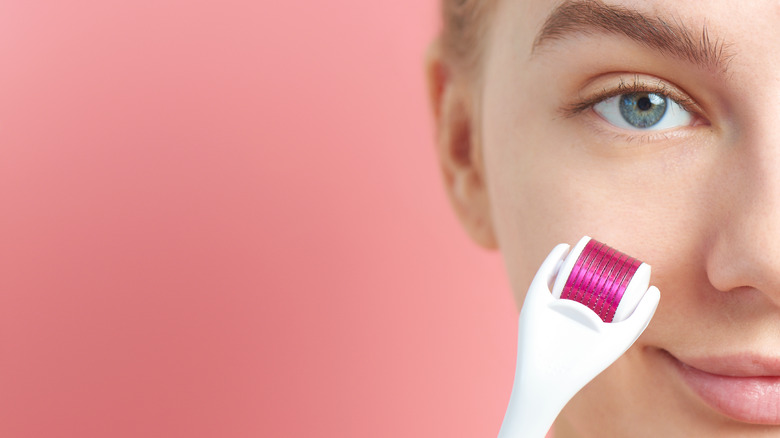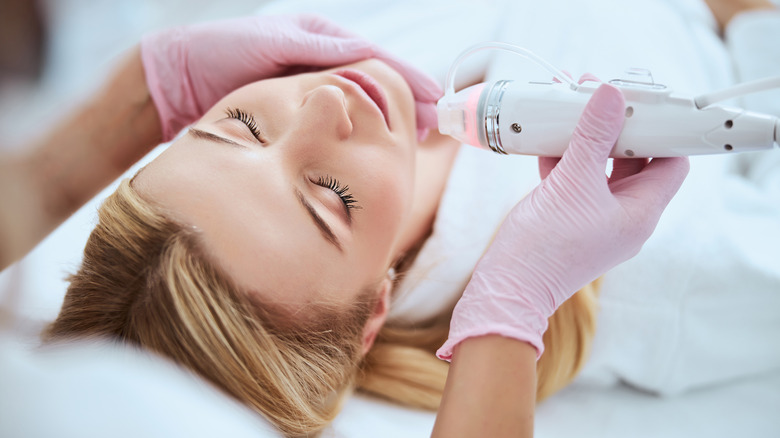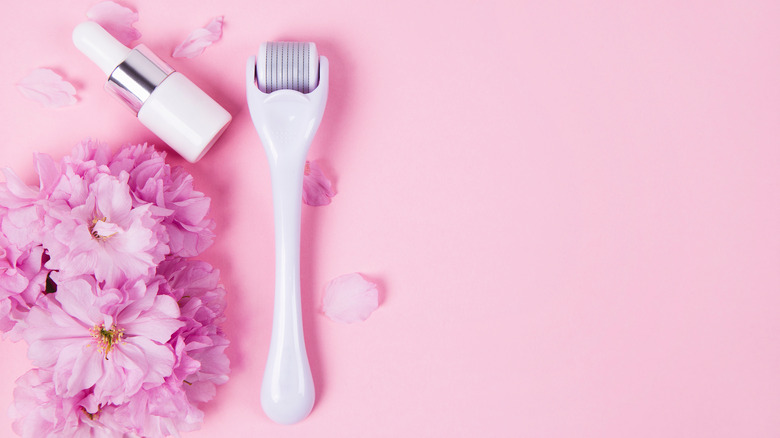What To Know Before Trying Microneedling With PRP
There's no getting away from the fact that microneedling has become increasingly popular in recent years, particularly among celebrities and Instagram influencers — and it's easy to see why. Byrdie reports that, as per a 2009 study, "almost 100% of microneedling participants reported a noticeable difference and vast improvement in the appearance of their acne scars after a treatment."
Microneedling is a cosmetic treatment that uses tiny needles to puncture the first layer of skin. The aim of the microneedling process is to help rejuvenate skin by increasing the production of collagen. This can help to reduce the signs of aging, encourage the fading of acne scars, reduce hyperpigmentation, and improve skin texture.
Meridiem DermSpa reports that the process of microneedling relies on "your skin's own natural healing ability to reduce the look of fine lines, scars, and wrinkles," explaining that the procedure is simple, "minimally invasive," and can offer some fantastic results. One popular option is pairing microneedling with PRP, platelet-rich plasma, to enhance results. Here's what you should know before trying microneedling with PRP.
What does microneedling with PRP do?
The idea of having tiny needles plunged into your skin might sound scary, but the microneedling procedure is only minimally invasive and can have some fantastic results. As per Meridiem DermSpa, microneedling with PRP can help to improve or manage a number of skin conditions, including fine lines and deeper wrinkles, skin texture, scarring (including surgical scars and acne scars), large pores, sun-damaged skin, stretch marks, and aging skin.
PRP is often used alongside microneedling to help improve and enhance results further. According to Meridiem DermSpa, "studies have shown that PRP can expedite the healing process of tissues and reduce the appearance of pigmentation and acne scarring when used with microneedling." PRP uses your own blood, which reduces the risk of the plasma being rejected or causing an allergic reaction. What makes PRP so useful is that it contains a combination of proteins that can be used to help activate cell migration and encourage collagen and elastin production.
According to Medical News Today, microneedling with PRP tends to be more expensive than regular microneedling. However, the skin can heal more quickly as a result of using PRP.
What to expect from a microneedling treatment
Per Healthline, the microneedling itself usually lasts for 30 minutes. A medical-grade derma roller is used to treat the required areas of skin. This will be followed by blood being drawn from your arm. This blood is then separated using a centrifuge, which draws the PRP away from the blood's other components. This solution can then be "massaged into the treatment area."
Healthline reports that you can expect some mild side effects after undergoing a microneedling treatment. Straight after treatment, your skin might be "flushed or bright red," similar to the look of mild sunburn. The good news is that any soreness, swelling, or flushing should only last for 24 hours or so.
It's also important to remember to properly take care of your skin after your microneedling session, as this will make a difference in the outcome of the treatment. It's best to avoid using any skincare products that have harsh chemicals or are exfoliating; it's also useful to avoid scented products or acid-based products. When it comes to seeing results from treatment, it usually takes three to five weeks to start seeing noticeable results. This is because collagen production takes time to occur. However, the wait should be worth it.


